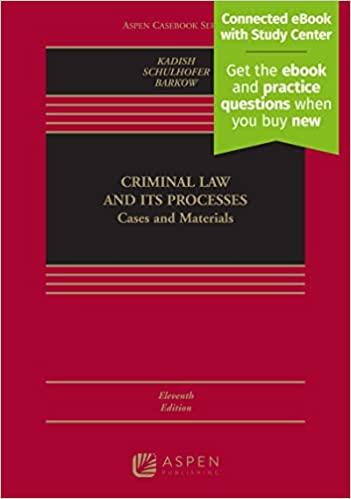Question
Read and Interpret Legal Documents Short Answer Questions Answer the following short answer questions. 1- What information would you include when defining the nature of
Read and Interpret Legal Documents
Short Answer Questions
Answer the following short answer questions.
1- What information would you include when defining the nature of a legal document?
2- What are the purposes that most documents will be used for within conveyancing?
3- What significance do conveyancing documents have?
4- What can you determine by assessing the document?
5- What sources might you access to conduct appropriate legal research, as required? List at least four (4).
6- Explain what is mean by the legal interests of the client in relation to the subject matter of the document.
7- What terms are essential to protect the client's interests?
8- How can you identify the non-legal interests and other needs of the client in relation to the subject matter of the document?
9- What details will you need to check in a document for their accuracy and relevance?
10- What are five (5) examples of document annexures you might check for their accuracy and relevance?
11- What will you do if you identify issues when checking documents or annexures for compliance with required procedural or formal requirement, or with the statutory and practice requirements if it comprises a statutory or prescribed form?
12- What are three (3) examples of third parties or other professionals you may identify and obtain information from?
13- List five (5) examples of the legal principles you interpret and analyse when closely examining the document.
14- Explain the different types of rights, responsibilities and liabilities you would identify and assess for all parties in the document.
15- Discuss the importance of identifying any lack of conformity and any gaps, lack of certainty or ambiguity in the language of the document.
16- Why is it essential that you identify any non-compliance with legal principles within the document?
17- In addition to the non-legal issues and risks to the client, what types of legal issues and risks would you assess?
18- What would you look into to interpret the extent to which the document does or does not protect the interests of the client?
19- Why is it important to interpret the key terms or points for negotiation with third parties or other professionals?
20- What information will you need to summarise and communicate clearly to the client?
21- What are four (4) examples of the common types of alternative courses of action you could discuss with the client, if you decide that the alternative courses of action?
22- What are the types of consequences you will need to summarise and communicate to the client in relation to any alternatives?
23- Outline four (4) of the methods you might use to provide the client with assistance in selecting a course of action.
24- What are three (3) examples of the statutory and other rules governing signing and witnessing of documents, including deeds?
25- Outline the typical rules governing the witnessing of the signing of documents that are to be applied in the execution of the document by the client.
26- What information would you record in the prepared file note for the task?
27- What are the typical methods used for the despatching of correspondence to client confirming the advice given in relation to the document and instructions received?
28- Discuss the instructions you would provide, clearly and concisely within correspondence dispatched to client, for the signing and witnessing of document that are not signed in the conveyancer's office.
Step by Step Solution
There are 3 Steps involved in it
Step: 1

Get Instant Access to Expert-Tailored Solutions
See step-by-step solutions with expert insights and AI powered tools for academic success
Step: 2

Step: 3

Ace Your Homework with AI
Get the answers you need in no time with our AI-driven, step-by-step assistance
Get Started


